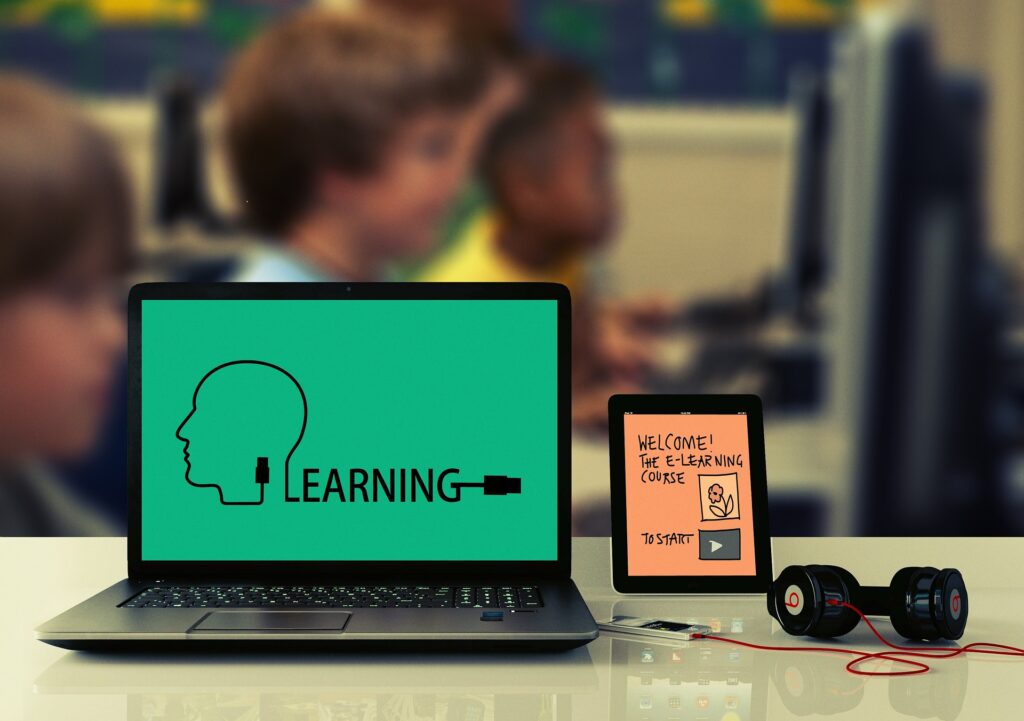
education building is often romanticized as the ultimate leveler, the tool upon which people chase dreams and society flourishes. It’s not only about going to school and getting an education – education is also the development of knowledge, abilities, and attitudes needed to advance society.
But what does it take to construct a sound educational system? Is it simply the classrooms and the syllabus or is there another angle to it? This blog will present the fundamental principles of ‘building education,’ which in itself is an education building as it aims at providing the society with appreciable individuals. We will examine the components of education, methods of constructing effective systems and the problems that we will have to face on the way.
The Education Building: A Fundamental Structure
Education building calls for unwavering support, a heavy anchor that has some heft attached to it. The three pillars described in the last section are the key determinants in constructing its presence.
1. Available Useful Resources and Implementations
Learning can be amplified if the right equipment is in place. Sadly, resource inequity in resource provision has been the norm for a lot of students in America.
Books and Internet
Try doing a maths question without a textbook or write an essay on a topic without a research source. That is impossible to accomplish. The availability of materials such as books, computers and even videos for teaching and learning or advertising a particular educational program is very essential. It also remains a great barrier with even the most basic tools for education building like the internet not available to many deprived and out of the way areas.
Overcoming Inequity
Resources like classroom grants, public-private partnerships or government elocations with a special emphasis in locating gaps in purses for educational purposes are very significant in eradicating disparities in education. It is indeed possible to reduce the regional and social divides in educational standards by promoting affordable high-speed connections and offering free educational software to members of underdeveloped regions.
2. Competent Teachers
Much as resources might ensure learning, they cannot guarantee success in education building if the resources are sent to a skilled leader who is willing to provide the students with the motivation to do learn, or rather where the resources are skillfully directed at.
Importance of Teachers
If there was no such thing as education building, teachers would be the very next good thing who is able to create education building in the first place.
They motivate, guide and share the knowledge with students: the skillful and professional teacher is able to present complex ideas in an interesting way and develop the students’ interest in the subject long after they leave the classroom.
Continuous Professional Development
Due to the accelerated development of the global industrial and technological frameworks, the teachers also need to keep evolving. Therefore, different kinds of workshops, e-learning modules focused on educator professional development as well as transforming the pedagogical approaches to teaching can help educators withstand modern educational trends.
3. Supportive Environments
The process of learning is not limited to the four walls of the classroom. The provision of a child’s home, the local community as well as the school itself forms a holistic view of the child.
The Role of Schools and Communities
To promote academic success, schools should strive to be more inviting and community members must work to eliminate apathy towards education. Such supportive environments make it possible to nurture and engage students as they are able to connect with their place in education building and their development.
Safe and Inclusive Spaces
Such aspects as bullying, discrimination or poor mental health provision are serious problems that need urgent attention. When schools take action to create a sense of belonging, while at the same time prioritizing students’ physical and mental wellbeing, students are inspired to pursue their dream endeavors.
Strategies for Education Building Systems
In order to create anexcellent educational system and ensure its effectiveness, it needs undergone appropriate measures to infuse creativity and flexibility.
1. Incorporating Technology
The way we study has been altered by the digital age and technology competence is one of the best forms of education building guidance.
Digital Tools and E-Learning Platforms

Some of the platforms that stand out in how students and teachers communicate include Google Classroom, Kahoot and Zoom among others. Such tools came in handy particularly during the COVID-19 pandemic. And even as schools are now incorporating such platforms in their teachings, they, schools stand ready to improve remote or hybrid learning models.
Gamification and Interactive Learning
Interactive learning techniques, especially the gamification technique where learners are taught through games has proven to be more effective. Through gamification, education building can be made beneficial for students that are not effective with traditional teaching.
2. Focus on Lifong learning
The learning process continues even after a student leaves school or college. Students or future professionals are expected to have a mindset, aimed at development through new technologies and information.
Beyond Formal Schooling
Lifelong learning encompasses professional certifications, skill courses or seminars, or internship programs. Instilling a sense of curiosity and a willingness to change and learn in students will guarantee their success in dynamic career directions and in industries developing at a rapid pace.
Promoting Rapid Industry Adaptation
Mentorship, internship and curricular development programs in collaboration with educational institutions and different industries allow students the opportunity to gain knowledge in the real world context of their future profession.
3. Collaboration Between Stakeholders
The solution is never found in the government, private, or educational institutions in isolation, each need the support of the other. Shared effort is essential.
Public, Private and NGO Partnerships
Collaboration between stakeholders is of immense worth and this potential has already begun.
Nonprofit organizations such as Teach For America, for instance, help elevate the quality of teaching in underserved regions, and in this way, also support the public school system.
Community Engagement
Parents, families, and the community, in general, contribute significantly to the welfare of the school. Parents can assist the needs of schools and students through policies, time, and activities that contribute to a learning culture.
Challenges in Education Building
There are challenges that come with attempts to create an education building system, and these challenges are not easy. And they should be prioritized and addressed during the planning phases.
1. Addressing Inequality
Inequalities in education building can be caused by gender or geographic distribution, or their mode and level of economic happiness.
Scholarships and Financial Aid
Equal opportunity programs and scholarship programs for low-income families should be introduced and implemented. There should be an availability of the education building provision regardless of the geographical location or economic status.
Remote Learning
Education technologies have made it easier to access distant learners who were previously unreachable and uneducated. More efforts should be directed towards these technologies in the future.
2. Overcoming Resistance to Change
There is always opposition to innovation due to cultural and institutional factors; such is the case when change is required to be instilled using an evolution strategy.
Balancing Tradition and Progress
Today’s education systems have to ensure that they remain culturally relevant while remaining relevant in the events that involve formulation of policies that are aimed at preparing students for the space-Age world.
The realization of all transformations poses many difficulties, and therein lies the need for equilibrium among these constituents.
Justified Education in the 21st Century

Education, in its maximum expression, is a joint venture. Every parent has a duty to assist the students, just as every teacher, tech company, and the federal government that sets out policies. Investing in education does not only mean investing in the individuals; it is also an investment in the economic and social development of the United States as a whole.
It is time to educate society, remove the gaps in the level of education and other inequalities, and provide every person, irrespective of social and gender status, with the required knowledge, skills, and opportunities.
Do you have any opinions or comments on how education should be improved in your community? Use the comment box to add your voice or even participate in educational campaigns in your community to improve the learning systems in your locality. There is power in numbers, and together we can ensure that education is a level playing field for all.
Understanding the Effectiveness of Policy Implementation
As one of the key stakeholders involved in implementing changes in educational systems, it is important to evaluate the impact of the changes. This helps to make evidence-based decisions and improve practices over time.
Using Assessment and Data Analysis for Making Informed Decisions
Having data pertaining to student performance, engagement levels and their attendance can be key in determining the success of any approach as well as its failure. Assessment methods, student opinions, and tracking and evaluation carried out at intervals are some of the methods that can help in monitoring and evaluation of the project activities.
Getting Feedback on the Professional Development Teachers
No education system can succeed without teachers and the teachers’ effectiveness is paramount to the students’ achievement. To ascertain and improve the teaching practice, such programs include self-directed professional development, friendly and constructive evaluation, and classroom practice observation.
Tracking Post-Education Success – Following the Foot Prints of the Education
We raise our sights, and so should schools who understand, that being educated is only one of the many steps one goes through in making it. Employment, follow up learning, and life satisfaction rate are some the parameters that can be used to determine whether graduates are ready for the tough world out there.
The Role of Innovation Labs in Education
Recently, education related innovation labs are targeted to be the revolution to help create and implement better methods and tools of learning. This collaboration involves teachers, technology developers, and policy makers in developing replicable strategies to solve core issues in educative process.
Experimentation and Prototyping
The innovative idea labs allow room for developing new concepts for personalized learning devices, or AI-assisted teaching, or VR-based learning environments. In fact, the iterative development process reduces the risk of implementing ineffective tools and best practices in educational institutions.
Promoting Collaboration

And since this involves different areas, it empowers people such as teachers and students who have been central to the changes in how education is provided. Thus creating solutions which are realistic and focused on the learner.
Scaling Successful Models
Every time an initiative or a project in an innovation lab is able to produce desirable results it is possible to use such successful models in order to reach a wider audience. Effective approaches are, over time, replicated in different regions of the education system in a much faster way.
Approaches to address education in more wholly and inclusively need be proactive, study driven, collaborative, and equitable in nature. In unison, we can realize a time when all people can enjoy education, which is a true equalizer to further social equity and inclusion.
Conclusion: Education Building
School building or designing of the curriculum alone is not enough for the education building. Education building deals with developing systems that harness potentials, allowing for constructive criticism and molding people to adapt with the society of greater complexities. By emphasizing on accessibility, creativity, and sharing, we are capable of formulating educational systems suitable for all ages and all types of individuals.
The problems are huge, and include: injustice, cultural inertia, and lack of resources – but they can be shifted. Quality teaching, combined with purposeful collaboration, and the right technology will do the magic and the world will not take so long to comprehend the importance of education in the 21st century.
Last but not least, education building is a collective activity and requires all- individuals, communities and global institutions to put in their efforts. When we talk of education, we are talking of the future. We are talking about laying the basis of a more just, more educated and more prosperous world. This is a vision which we all need to work towards.
FAQS
What is education building?
Education building is the process that involves the establishment of the overall framework within which knowledge, skills and values are harnessed. It calls for schools, homes, governments, and community together.
How can technology improve education?
Technologies help in enhancing the effectiveness of remote learning, customizing the educational process, and employ game-based learning that keeps students interested and makes the learning process simpler.
Why is teacher development important in education?
Teachers are key role models for students. Through constant training, educators are equipped with contemporary tools and methodologies that will ensure students excel.
What role do communities play in education?
Communities assist schools in creating settings where learners feel welcomed, spearhead the distribution of educational materials, and generate a sense of purpose among stakeholders in relation to learner achievement.



